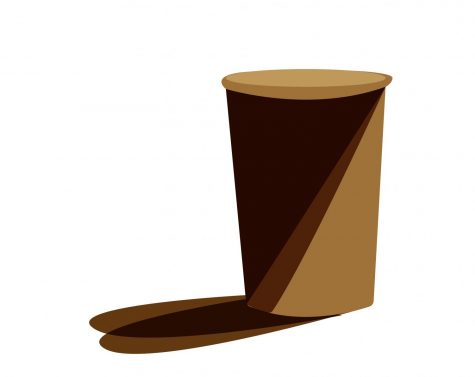Penalties for pushing paper products
February 6, 2020
Recently, CWU has switched to using only paper cups, and seems to be slowly replacing plastic straws with paper straws. The push for paper products is well-intentioned, but may not be the change the planet needs.
The reality of paper versus plastic is that while paper is a more biodegradable option, it also poses other problems for the planet. Paper production emits more pollution than plastic. According to the website How Stuff Works, paper production emits specifically 70% more pollution than plastic production. The site also points out producing paper creates 50 times the amount of water pollution made by plastic. Also, paper products take four times the amount of energy to produce than plastic products.
Along with these factors, it can be harder to recycle paper products. While many paper products are recyclable, paper products used for consuming food may not be. Many recycling facilities will not accept food contaminated products. Since paper absorbs liquids, there is a good chance many paper products are easily food contaminated. This means it is not a guarantee that these products will be recycled.
The 2007 Boustead Report done at Northern Carolina State University found paper bags used 3.4 times the amount of non-renewable energy than plastic. The study also found paper bags produced two times the amount of greenhouse gas plastic bags produced. Along with this, they found paper bags consumed 17.4 times the amount of water than plastic and generated 4.8 times more solid waste.

A report called “Revised Analysis of Life Cycle Assessment (LCA) Relating to Grocery Bags” by Use Less Stuff (ULS) found plastic bags generate 39% less greenhouse gas emissions than uncomposted paper bags. On top of this, they found plastic bags emit 68% less greenhouse gas emissions than composted paper bags. The report also states that after four or more uses, reusable plastic bags are superior to all types of disposable bags.
It seems producing paper products may be doing more harm than some people realize. With how much more waste and greenhouse gasses paper products create, I think plastic may be a better option.
The problem is plastic bags aren’t recyclable at recycling centers. Recycling centers usually deal with rigid items rather than flimsy ones like plastic bags. However, people can recycle plastic bags without putting them in recycling bins. Many large stores such as Target and Walmart have bins for collecting people’s old shopping bags, a viable option for getting rid of the ones someone gets when they go grocery shopping. Plastic bags can also be convenient to use as garbage liners, a personal favorite reuse for them.
Plastic straws are also not usually recyclable because they are small and flexible and can fall between the cracks in machinery used at recycling centers. However, there is a way to get plastic straws recycled. A 2018 blog post on the website Get Green Now described a loophole around getting plastic straws through the machinery. Straws are made out of polypropylene, or type 5 plastic. To prevent straws from slipping through the cracks in the conveyor belts used in recycling centers, put the straws in a bigger container made out of type five plastic, which is polypropylene. This way the straws make it through the machinery and get recycled, along with the container they are put in.
The best way to go about the paper versus plastic debate seems to be to use plastic, but use less. Along with using less, be responsible when using plastic. Plastic can be very harmful because it does not degrade like paper. However, it emits far less pollutants and is much more reusable. It does not tear or become unusable when wet like paper does. According to the University of Southern Indiana, the average person uses about seven trees per year in paper and paper products, which amounts to 2 billion trees per year. Instead of using products from these trees to emit greenhouse gasses, we should be allowing these trees to clean the air. According to Science Focus, it takes about seven or eight trees to produce enough oxygen for a person for a year. Multiply this by the 7.7 billion people on earth as of October 2019, and that’s roughly 53.9 billion to 61.6 billion trees. In an interview with The Guardian, a Swiss professor named Tom Crowther stated that we lose about 10 billion trees per year. Instead of sacrificing more trees for paper products that actually aren’t much better for the environment than plastic, I vote we let these trees live.
Paper products really aren’t better than plastic products as far as eco-friendliness. Plastic products come with their own problems, but if recycled and reused properly they are much better for the environment than paper. I think using plastic or reusable products, and being smart about how they are handled after use, seems to be the way to go for sustainable living.

